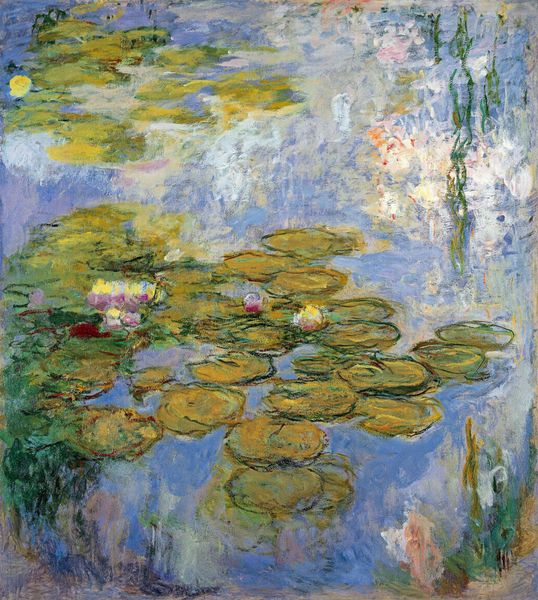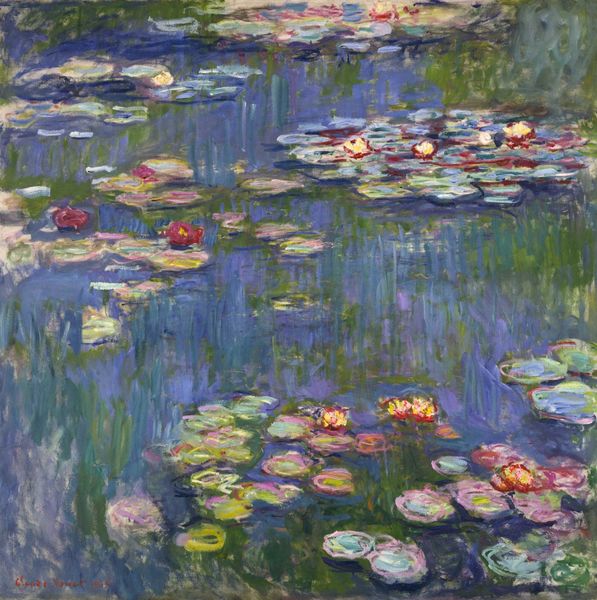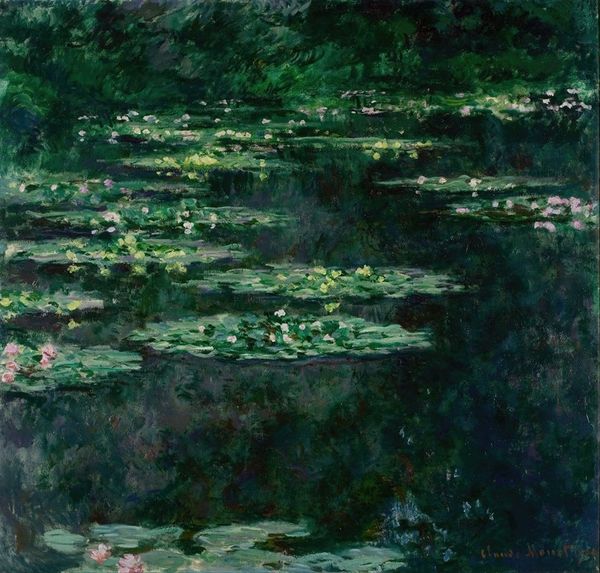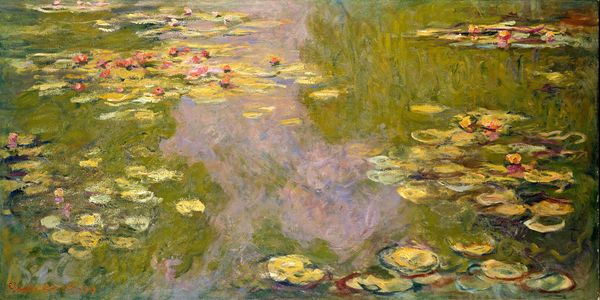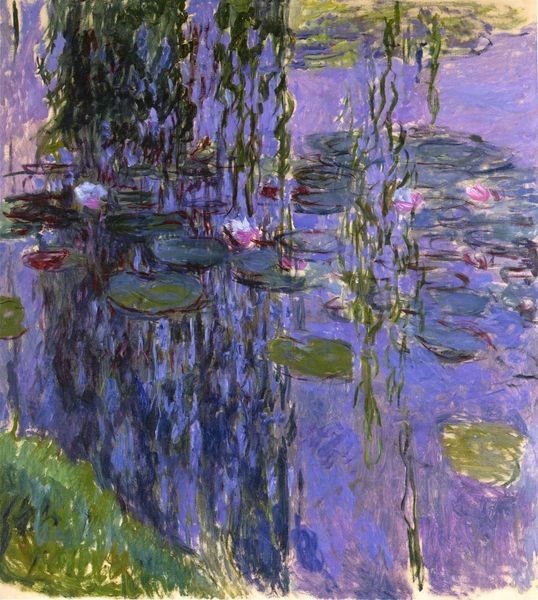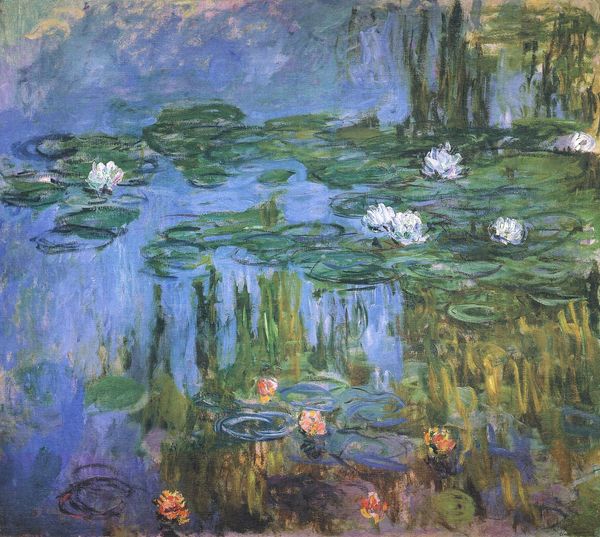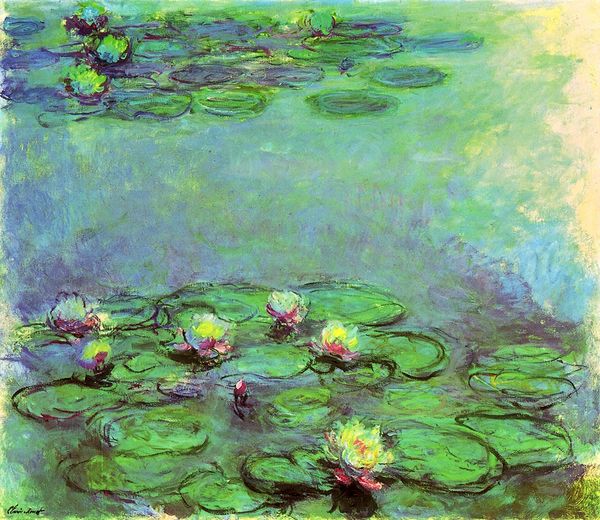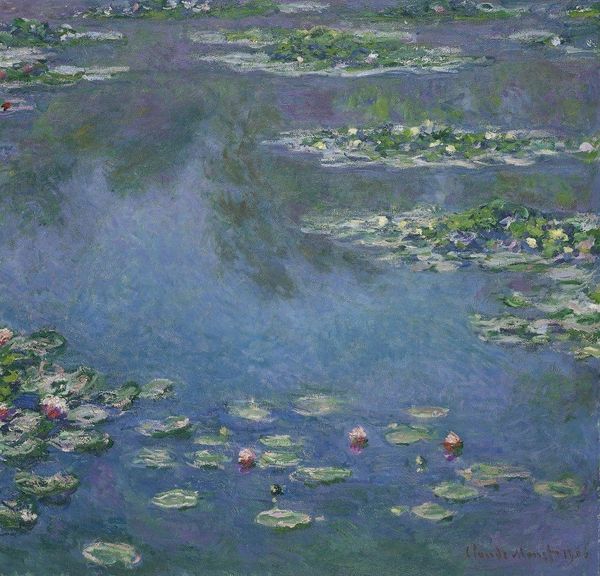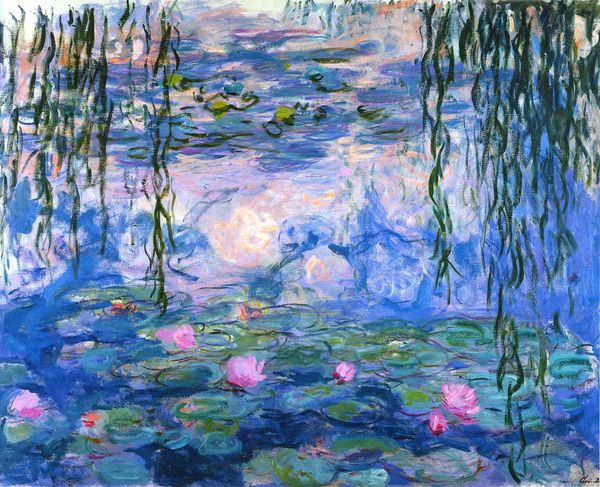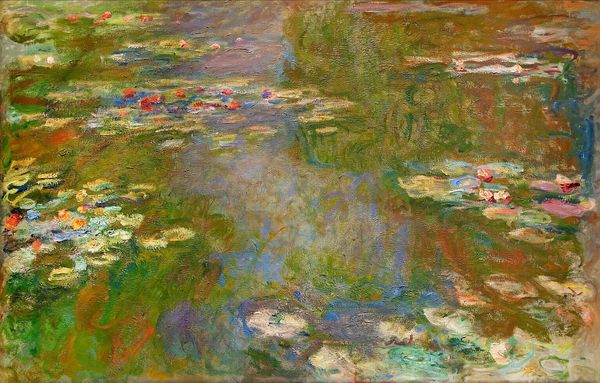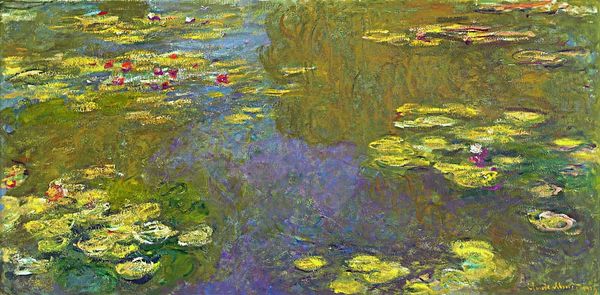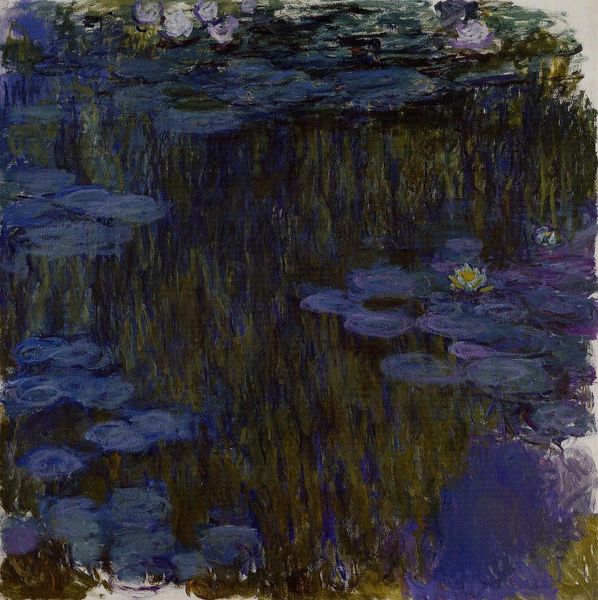
Copyright: Public domain
Art Historian: We’re looking at "Water Lilies," painted in 1914 by Claude Monet. The canvas teems with blooming lily pads afloat on dark water, rendered in his signature impressionistic style using oil. Curator: My first thought is that the darkness surrounding those pale blossoms creates a palpable sense of yearning. There's an implied resilience in seeing life emerge despite an environment rendered in such muted shades. Art Historian: The water lily has long carried symbolic weight across various cultures. In ancient Egypt, for instance, it represented rebirth and regeneration, linked to the sun's daily cycle. Here, Monet may be channeling similar notions of nature’s cyclical power and resilience through turbulent times. Curator: I wonder if Monet consciously imbued those symbolic associations. After all, he created this work on the cusp of the Great War. Could it be that the flowers hint at a form of quiet resistance and beauty flourishing amidst emerging darkness? Or perhaps, a more direct commentary on nature as refuge, far removed from societal unrest? Art Historian: Precisely! I believe it’s no coincidence the lilies provide a sense of tranquility, inviting contemplation. In that regard, Monet utilizes them as allegories of hope; each bloom a beacon of promise as Europe descends into war. Curator: It also raises important questions about accessibility and privilege during such widespread conflict. Who could afford to turn away from the violence towards beauty? Is nature simply for those sheltered from crisis? Art Historian: While the privilege to escape turmoil exists, so too, can exist a fundamental, human yearning to discover glimmers of hope even in the face of great challenges. Monet seems to have tapped into our longing to discern symbols of enduring strength. Curator: The painterliness emphasizes impermanence, as each vibrant daub seems ready to evaporate off the surface, revealing that everything – beauty and sorrow – passes with time. What appears stable one moment will inevitably shift. Art Historian: The artist's choice to return repeatedly to these lilies shows an effort to reconcile this reality. He found solace observing beauty’s eternal recurrence and hoped others may share such solace too. Curator: And isn’t that where power lies? A small but persistent act of faith can foster revolutionary optimism. Thanks, Monet!
Comments
No comments
Be the first to comment and join the conversation on the ultimate creative platform.
